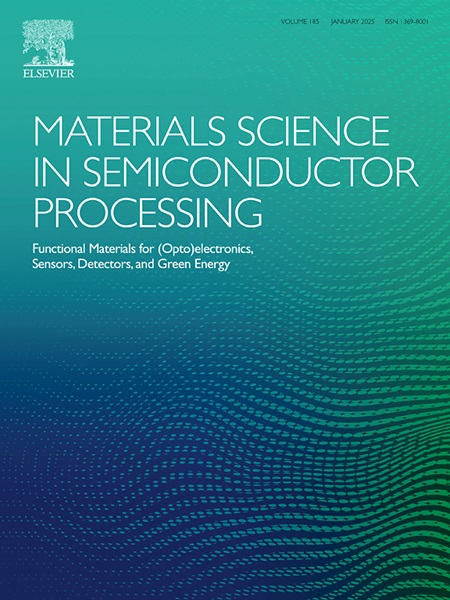Wafer bow control of extended wavelength InGaAs photodetector materials by strain tailoring
IF 4.2
3区 工程技术
Q2 ENGINEERING, ELECTRICAL & ELECTRONIC
引用次数: 0
Abstract
The wafer bow caused by lattice mismatch between metamorphic InGaAs epitaxial layer and InP substrate has become one of the key factors limiting the large-scale development of extended wavelength InGaAs focal plane array photodetectors. By introducing tensile strain in InAlAs buffer layers and InAlAs cap layer to compensate the compressive strain caused by lattice mismatch, the wafer bow was decreased from 55.9 μm to 22.2 μm. The influence of strain compensation structure on the anisotropy of metamorphic InGaAs materials was investigated by stress distribution, surface morphology, and PL uniformity. XRD and PL characterizations indicate that small tensile strain in InAlAs buffer layers did not reduce the quality of metamorphic InGaAs epitaxial material. This study shows that strain compensation is an effective method to control wafer bow and decrease anisotropy of metamorphic InGaAs materials grown on InP substrate.
应变裁剪法控制扩展波长InGaAs光电探测器材料的晶圆弯曲
变质InGaAs外延层与InP衬底晶格失配导致的晶圆弯曲已成为限制扩展波长InGaAs焦平面阵列光电探测器大规模发展的关键因素之一。通过在InAlAs缓冲层和InAlAs帽层中引入拉伸应变来补偿晶格失配引起的压缩应变,晶圆弯曲从55.9 μm减小到22.2 μm。从应力分布、表面形貌和PL均匀性等方面研究了应变补偿结构对变质InGaAs材料各向异性的影响。XRD和PL表征表明,InAlAs缓冲层中较小的拉伸应变并未降低变质InGaAs外延材料的质量。研究表明,应变补偿是控制晶圆弯曲和降低在InP衬底上生长的变质InGaAs材料各向异性的有效方法。
本文章由计算机程序翻译,如有差异,请以英文原文为准。
求助全文
约1分钟内获得全文
求助全文
来源期刊

Materials Science in Semiconductor Processing
工程技术-材料科学:综合
CiteScore
8.00
自引率
4.90%
发文量
780
审稿时长
42 days
期刊介绍:
Materials Science in Semiconductor Processing provides a unique forum for the discussion of novel processing, applications and theoretical studies of functional materials and devices for (opto)electronics, sensors, detectors, biotechnology and green energy.
Each issue will aim to provide a snapshot of current insights, new achievements, breakthroughs and future trends in such diverse fields as microelectronics, energy conversion and storage, communications, biotechnology, (photo)catalysis, nano- and thin-film technology, hybrid and composite materials, chemical processing, vapor-phase deposition, device fabrication, and modelling, which are the backbone of advanced semiconductor processing and applications.
Coverage will include: advanced lithography for submicron devices; etching and related topics; ion implantation; damage evolution and related issues; plasma and thermal CVD; rapid thermal processing; advanced metallization and interconnect schemes; thin dielectric layers, oxidation; sol-gel processing; chemical bath and (electro)chemical deposition; compound semiconductor processing; new non-oxide materials and their applications; (macro)molecular and hybrid materials; molecular dynamics, ab-initio methods, Monte Carlo, etc.; new materials and processes for discrete and integrated circuits; magnetic materials and spintronics; heterostructures and quantum devices; engineering of the electrical and optical properties of semiconductors; crystal growth mechanisms; reliability, defect density, intrinsic impurities and defects.
 求助内容:
求助内容: 应助结果提醒方式:
应助结果提醒方式:


